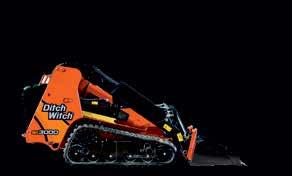PUBLICATION OF THE OHIO LANDSCAPE ASSOCIATION





J.F.D. Landscapes, Inc.






J.F.D. Landscapes, Inc.
Search the endless seas of Google or Chat GPT for quotes on planning and you will find a treasure trove of information about planning. Some of the top quotes you find online are “a goal without a plan is just a wish,” “failing to plan is planning to fail,” or “plans are useless, but planning is indispensable.” They all sound a little different, but they all come back to the same thing. If we want to be successful then planning is not an option, it is a requirement.
We all make plans to some extent, some of us make plans down to the last detail, while others have plans that look more like fallen leaves strewn about on the lawn. Regardless of how detailed or not our plans are, we do all have them. Just as important it is to have a plan, we must start with the outcome. What does it all look like at the end, is it big or small, are the lots of people or only just few, is it on a beach in Tahiti or on a ice sheet in Antarctica? Once we have the outcome figured out, then we can make the plan to get there.
The OLA is no different than any of us in this, regardless. We must have a plan of where on earth we are going or else we will spend eternity wandering said earth accomplishing nothing that we actually want to accomplish. What we do at the OLA to plan is hold a strategic planning event every three years with the entire board of directors participating. We take stock of where we are at currently, we look back at what has been accomplished or not accomplished from the previous strategic plan, then we look ahead to the future and what that outcome looks like. We hold this planning off-site to get everyone’s heads clear of the chaos back home and focus on solely what is best for the OLA.
For the first time, our strategic plan is located on our website and has been included in other various emails that have been sent out since our current plan was finalized earlier this fall. It is not terribly long to read, so I would implore you all to take a look at it, read it, think about it, and offer up any comments you have on it. This is your association, the board is the representation of us all, and exists only for the betterment of the OLA.
continued on page 6

COVER: Specialty Gardens / Merit Award: The Bremec Group
OHIO LANDSCAPE ASSOCIATION
9240 Broadview Road
Broadview Heights, Ohio 44147
Phone: 440.717.0002
Toll Free: 1.800.335.6521
Web: www.ohiolandscapers.org and www.myohiolandscape.com
Michael J. Donnellan, M3 Wealth Management
Jim Funai, PhD, Cuyahoga Community College
Shelley Funai, Stan Hywet Hall and Gardens
Ryan Drake, J.F.D. Landscapes, Inc.
Patty Lampert, Ohio Landscape Association
Bobbie Schwartz, FAPLD, Bobbie’s Green Thumb
ADVERTISING INFORMATION
Submission deadline: 10th of the month, prior to the month of magazine publication. For advertising and ad specs, please call 440.717.0002, and ask for Patty Lampert.
The Ohio Landscape Association, its board of directors, staff and the editor of The Growing Concern neither endorse any product(s) or attests to the validity of any statements made about products mentioned in this, past or subsequent issues of this publication. Similarly, the opinions expressed in The Growing Concern are those of the authors and do not necessarily represent the views of the Ohio Landscape Association.
OFFICERS
President Ryan Drake
President – Elect
Brandon Barker
Treasurer
Matt Malone
Immediate Past President
Cameron Maneri
DIRECTORS
Jeffrey Ardo
Jason Deuble, LIC, OCNT
Amy Gatoo
Gil Kupetz
Tom Rieder, LIC
OLA STAFF
Executive Director
Patty Lampert
Membership Coordinator
Melissa Roberts


DECEMBER 4
PLANT HEALTHCARE & DORMANT PRUNING
LOCATION:
SECREST ARBORETUM, WELCOME EDUCATION CENTER
2122 Williams Road, Wooster, OH 44691
TIME:
8:30 am-3:15 pm
SCHEDULE
REGISTRATION/BREAKFAST
8:00-8:25 am
CLASSROOM LEARNING - PLANT HEALTHCARE
8:30-9:30 am
OUTDOOR LEARNING
(Please dress for the weather)
9:30-10:30 am BREAK
10:30-10:45 am
REVIEW/Q&A WITH PRESENTERS & SURVEYS
10:45-11:30 am
LUNCH
11:30 am-12:00 pm
CLASSROOM LEARNINGDORMANT PRUNING
12:00-1:00 pm
OUTDOOR LEARNING
1:00-2:00 pm BREAK
2:00-2:15 pm
REVIEW/Q&A WITH PRESENTERS & SURVEYS 2:15-3:00 pm
COST
Members: $125.00
Non-Members: $175.00
DECEMBER 2 AND 9
SANDLER SALES TRAINING
LOCATION: MP SOLUTIONS
TRAINING FACILITY, 6060 Rockside Woods Blvd., Suite 105 Independence, OH 44131
DATE & TIME:
December 2 and 9, 2025 8:00-12:00 pm
PRESENTER: Rob Yoho,
Principal at Sandler Training Powered By MP Solutions Inc.


HEIDI BALDWIN
Hinchcliffe Landscaping, Inc. 9387 Baldwin Rd. Kirkland Hills, OH 44060 (440) 796-8377
ERIN CLARK
Daltile 2779 Williamsburg Cir. Stow, OH 44224 (330) 328-1851
EDWARD PAWLAK JR.
Tire Swap
Waiting on street address North Ridgeville, OH 44039 (216) 376-9389
SCAN THE QR CODE TO SEE A FULL LIST OF EVENTS AND REGISTRATION.
BRAD RUTH
Great Lakes Business Advisors 4644 Graford Lane Stow, OH 44224 (330) 524-8205
ROB YOHO
Sandler 18019 Diagonal Road LaGrange, OH 44050 (440) 213-5449
ALEXA MARTIN
Daltile #219
730 Dearborn Park Lane Columbus, OH 43085 (614) 433-9181
continued from page 3
The long-term vision that we have come up with breaks down over 4 points:
• To have a significantly larger statewide membership base where most of the members are actively involved.
• To be a go-to resource for all things green industry related, with an exceptional web presence and shared resources.
• To have well-developed educational opportunities that support the organization’s mission with the possibility for state or national certification and apprenticeship placement.
• To have enough staff dedicated to specific areas such as marketing, education, events, etc. to provide efficient operation of the association.
These are very real outcomes that we can achieve, but that does not mean they will not be easy to do, it requires all of us to make these happen. The OLA achieving these objectives means the betterment of the industry and all of our members. One of the best ways to help the OLA and help yourselves is by getting involved and getting on a committee. The relationships you form and the work you will do on the committee can pay off in dividends down the road.
Take a moment to read the OLA’s Strategic Plan, but also take some time and work on a strategic plan for yourself or your business. The future you and all those that are connected to you are depending on it.
Thank you for making this association go round and being a part of the OLA. Happy planning!








EVENT INFORMATION
DATE & LOCATION
December 4, 2025
Secrest Arboretum
Welcome Education Center
2122 Williams Road
Wooster OH 44691
REGISTRATION/BREAKFAST
8:00 - 8:25 am
CLASSROOM LEARNINGPLANT HEALTHCARE
8:30 - 9:30 am
OUTDOOR LEARNING
(Please dress for the weather)
9:30 - 10:30 am
BREAK
10:30 - 10:45 am
REVIEW/Q&A WITH PRESENTERS & SURVEYS
10:45 - 11:30 am
LUNCH
11:30 am - 12:00 pm
CLASSROOM LEARNINGDORMANT PRUNING
12:00 - 1:00 pm
OUTDOOR LEARNING
1:00 - 2:00 pm
BREAK
2:00 - 2:15 pm
REVIEW/Q&A WITH PRESENTERS & SURVEYS
2:15 - 3:00 pm
COST
Members: $125.00
Non-Members:
MORNING: INTRODUCTION TO PLANT HEALTHCARE
AFTERNOON: PRESCRIPTION PRUNING
Both classes are designed for business owners and employees and will have demonstrations of proper planting techniques and pruning. You’ll learn about pests and diseases and determine how best to handle these situations. You’ll also learn about controlling plant size, and the correct process of pruning to retain natural branching characteristics. There will be a demonstration of root invigoration and structural pruning in the field on Secrest Arboretum trees. Attendees will be outside for about 45 minutes and will need to bring outdoor clothing and boots.
Classroom learning sessions focused on:
UNDERSTANDING PHENOLOGY AKA GROWING DEGREE DAYS (Chris Riley, Ph.D.)
• Growing degree days (GDD) measure heat accumulation over the growing season and are an important indicator of plant and pest development. Dr. Chris Riley, Ph.D. of Bartlett Tree Experts will provide a simplified look at how this can be a useful tool to help you predict when to look for and/or treat specific diseases/pests.
CHAD RIGSBY, PH.D. Host-Insect Ecologist
Dr Rigsby will explore the importance of integrated pest management in early detection, treatment, and management of new and emerging pest & disease populations in woody plants. Plant health care with a focus on root and soil care (with demonstration) will also be covered.


ANDREW LOYD, PH.D. Plant Pathologist
Dr Loyd will explore changes to industry standards for pruning. Including Rx pruning with a focus on structural pruning landscape trees of all ages. An emphasis on development pruning (with demonstration) will also be covered.


Visit the OLA Events Calendar on our website, OhioLandscapers.org or use the QR code




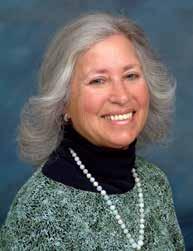

Another year, more books to savor. Some to give as gifts, some to request for yourself. Some to help you add to your design skills. Enjoy.
The introduction by Roy Diblik to Jacqueline Van der Kloet’s My Garden: A Year of Design and Experimentation says it all. Here is a man – a famed grower, landscape designer, and author – who describes the work of this woman as eye opening. He never thought about how to use bulbs in the garden to complement perennials but saw first hand how she choreographs with them, enhancing textures, colors and rate of growth to echo the perennials among which they are planted.
Jacqueline has used her own garden, with its many ecologically diverse sites, to experiment with plant combinations. Because
it is her personal garden, she can closely monitor what works and what doesn’t. Writing the book forced her to take more photographs that she found quite enlightening, many of which are featured in the book. Although the book is arranged by month, starting in September, the reader can actually start anywhere. She also discusses and shows photographs of gardens that she has designed around the world.
This book is a joy to read. Jacqueline’s writing is lyrical and poetic, evoking emotions that most gardeners feel without defining them. Like all gardeners, she has made mistakes, relates some of them, and cautions us to remember that making mistakes is how we learn.
continued on page 10
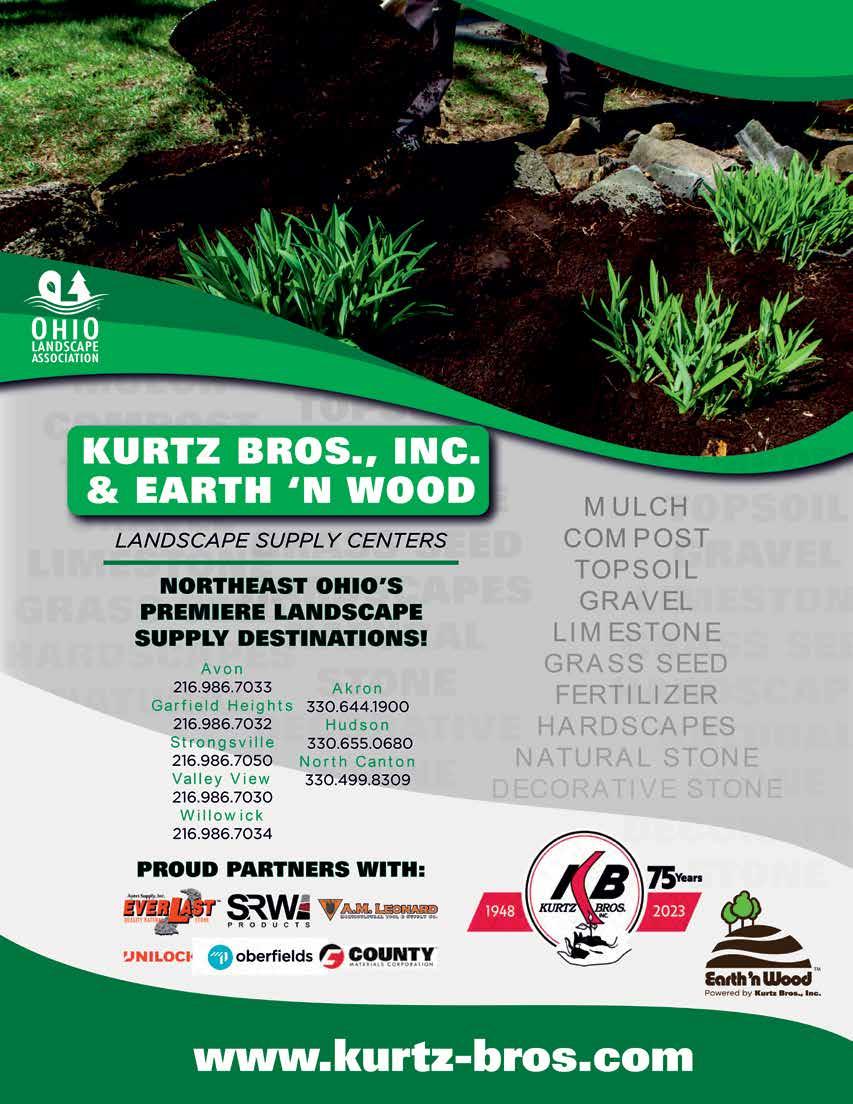
continued from page 8
I admire her scattering philosophy for planting bulbs but have found it impractical because, when I plant in October, the garden is still flourishing and I know that I will never find all the bulbs among the existing foliage. Jacqueline’s answer is found in her November chapter. She recommends tying back grasses and cutting down some perennials as needed. I’ll have to try it.
Among all the interesting tidbits of information, I found this one to be amazing: I’ve always deadheaded tulips, by cutting the stalk to the base to prevent them from going to seed, but Jacqueline recommends leaving the stem as well as the leaves to collect as much light as possible to further photosynthesis.
Although best known now for her bulb design, Jacqueline has much advice and philosophy about design in general for those who read this book.
Plants for the Winter Garden
Warren Leach, the author of this book, encourages us to embrace winter by designing elements into our landscapes that are enhanced by the low angle of the sun, the wintry precipitation of ice and snow, and the shadows cast by bare branches and tree trunks.
Many of these elements will be missing if the perennials and ornamental grasses in our landscapes are cut to the ground in the fall. The deadheads remind us, of course, that the garden is not dead, merely dormant. However, if the deadheads are missing, they cannot become sculptures when encased in ice or snow nor can they provide food for birds. Leach also emphasizes that stems and leaves provide shelter and nesting sites for beneficial insects and pollinators. Since he grew up in Maine and now gardens in Massachusetts, many of the perennials he mentions for winter interest are hardy for those of us in Ohio.
Also essential to the winter landscape are conifers and broadleaf evergreens because green is perceived as the color of life. Such shrubs and trees also provide an excellent background for the flowers and deadheads of deciduous perennials and fruits of deciduous shrubs.
It never occurred to me that the leaves of conifers and broadleaf evergreens vary in the absorption or reflection of light depending on the type of foliage and Leach gives several examples of this phenomenon. He also discusses
blue and yellow conifers that illuminate winter gardens and believes that the best foliar pairings mix contrasting textures and colors of broadleaf and coniferous evergreens. His photographs of various weeping confers make me want to find space for some.
Until I read this book, I had never heard the word marcescent. Leach uses this word to describe the “characteristic of some temperate woody plants to retain their dead or withered leaves throughout winter.” The best example is the foliage of American beech (Fagus grandifolia). Its pale coppery, herringbone veined leaves seem to reflect light and are quite beautiful when dusted with snow.
I have always loved exfoliating bark and Leach extols their beauty in winter landscapes. As you know, the bark is stands out more once the tree has defoliated. Both his words and photographs supply a range of an excellent choices. The one shrub with exfoliating bark that he mentions is Hydrangea quercifolia (Oakleaf Hydrangea).
Leach also reminds us that some trees and shrubs produce flower buds that are on display all winter. I do enjoy watching magnolia buds enlarge during the winter and the incipient sprays of Pieris japonica emerge during the fall and then turn rose late in the fall while turning white again in spring. He does mention some shrubs with winter flowers but most would not be hardy in northern Ohio. Shrubs and trees with colorful winter fruit abound but Leach is quick to mention that those fruits often disappear due to the appetite of hungry birds.
In contrast, the list of enduring deadheads and evergreen or evercolor foliage of perennials, ferns and ornamental grasses is quite long. I’ve never planted Galax urceolata (Wand Flower) but now plan to search for it because its foliage turns maroon during the winter and thrives in moist shade.
Using many of the plants he has mentioned during the major part of the book, Leach then demonstrates in six different examples how important structural forms are, particularly in entry landscapes. He goes on to demonstrate the importance of keeping in mind what one sees looking out of building windows. A bonus is the short chapter on planting permanent pots. Now I’m rethinking my front porch containers that I fill with drought tolerant annuals each year. Lots of food for thought in this book.
As soon as I read the introduction, I knew I would love this book. I’m so tired of hearing clients say they just want something that is low maintenance but looks nice. Although I’m a confessed plant-a-holic, as a landscape designer, I need to integrate new plants into the existing beds so that they look as though they belong, not just sited because there’s a space there. My plants are crowded and some die because they get shaded out, but Teresa’s definition of maximalist design encourages me to continue using bold colors, textures, and layers to create beds filled with personality and joy.
A bonus of maximalist gardens is that they are full of diversity and thus tend to be pollinator heavens.
The sites that have been beautifully photographed by Bob Stepko are as different as they can be, ranging from a small backyard in Buffalo to a “castle” on Long Island Sound. The sites visited all over the country, from east to west, north to south, very cold to tropical, but there’s always a suggestion that could be meaningful. There is also a wide range of knowledge and experience among the garden designers. Some are homeowners with incredible imagination; some







are homeowners who have availed themselves of professional landscape designers and horticulturists. Others are landscape designers who have confronted difficult sites and come up with very creative solutions. I’ve been fortunate enough to have toured two of the gardens in the book and taken a zillion photos of each.
Each set of gardens offers tips on various aspects of gardening, so even though you may think very large properties have nothing for you, you would be wrong. There is always something you never thought of that you can apply to your garden or to a client’s garden.
Leach, Warren, Plants for the Winter Garden, Timber Press, Portland, 2024. Van der Kloet, Jacqueline, My Garden: A Year of Design and Experimentation, Timber Press, Portland, 2025.
Woodard, Teresa, Garden to the Max, Timber Press, Portland, 2025.
Bobbie Schwartz, FAPLD, owner of Bobbie’s Green Thumb in Shaker Hts., Ohio, is a landscape designer, consultant, freelance writer, and lecturer whose specialties are perennial gardens and four season landscapes. In addition to being an Ohio Landscape Association (OLA) member, she is an active member of the Ohio Nursery and Landscape Association (ONLA) and Perennial Plant Association (PPA). Bobbie is a Past President of the Association of Professional Landscape Designers (APLD).


MICHAEL J. DONNELLAN
M3 Wealth Management
As we wind down the 2025 year, here are some important considerations investors should work on as the holidays quickly approach. There are several reasons to make year-end financial and estate planning a priority, because when the year turns over there is no going back.
Probably the most complicated and time-consuming issue, but the one that can cost you, or save you, the most money. Some clients may need to generate gains or losses this year while the tax environment is still favorable.
Another issue in this category is the Required Minimum Distributions (RMD) from qualified retirement accounts. Clients over 73 years old must take their RMD this year or face stiff tax penalties of 25%. Also be aware of required distributions from Beneficiary IRAs.
As a general rule, don’t buy a mutual fund near the end of the year, without first checking when, and if, the fund will be paying out a capital gain for the year. If you buy Fund ABCDX on December 5th and they distribute a capital gain for the year on December 15th, you are responsible for
the tax on this year’s whole capital gain, even though you held the fund for only 10 days. Remember, a tax-sheltered account, such as an IRA, SEP, 401(k), etc. will not have this tax consequence.
Double-check that changes or updates are not needed on your accounts. It’s all too common to leave an ex-spouse, for example, assigned accidentally.
If you become incapacitated, do you have arrangements for someone to handle your medical and financial affairs?
Make sure you have the right amount of insurance for your needs. The insurance industry has become quite competitive, and you can easily compare rates and possibly save hundreds, if not thousands of dollars.
continued on page 14













continued from page 12

The holidays can be a busy time, but also a good time to set a budget. This is the time of the year when lots of your money is being spent. No better time to look at your finances than now. Think of ways to cut down on some of your expenses and/or plan on contributing more to retirement or college savings plans.
Set financial goals, but also personal, professional, entertainment and educational goals. This is a great time to do that.
Prioritize high-interest debt: Review outstanding debts, such as credit card balances and loans. Create a strategy to pay down high-interest debt and consider refinancing for better rates. Also, check your credit report and review your credit score and report for any errors or signs of fraud.
This is important because any mix of investments will get out of whack over time. One stock may have had a spectacular run and is now a large percentage of your portfolio. Your bond investments/funds won’t grow at the same rate as your stock, your U.S. and foreign investments will post differing returns, and funds following different investment styles will behave differently from each other, too.
That shifting mix matters. You had a reason for dedicating a certain portion of your portfolio to U.S. growth stocks, blue chip stocks, fixed income, a certain portion to foreign, and so on. You built your portfolio to reflect your investment goals and the level of risk that you’re comfortable with. But if your portfolio has drifted far enough away from that original mix, it will no longer be the same fit for you.
If you’re unable to contribute to a Roth IRA directly because you don’t qualify, you may benefit from contributing to a Traditional IRA, then converting the funds to a Roth IRA. Another option is to convert existing IRA assets to a Roth IRA.
The conversion amount is considered income for the year, so a tax professional could run scenarios to determine when a person will bump into a higher tax bracket and determine the proper amount. Another thought is to plan to spread conversions out over several years to minimize the tax impact.
If you itemize your deductions, you can claim the money you have given to charity. Donating highly appreciated stock can give you the full deduction and avoid the Capital Gains Tax.
Arrange meetings with your financial professional. Make it a priority and prepare by creating a list of topics to help get the most out of your discussion.
Is your risk tolerance the same? Are your financial goals and time frames different than they were when you first made your plan? Most investors have changing needs and it is important to be on the offensive, instead of being reactionary.
As always, talk to your financial professionals and tax advisors, to determine your specific needs and goals.
Scenarios illustrated are hypothetical in nature, results may vary. Investing is subject to risk which may involve loss of principal. Past performance is not indicative of future results.
The M3 Wealth Management Office does not provide legal or tax advice. Consult an attorney or tax professional regarding your specific situation. The information herein is general and educational in nature and should not be considered legal or tax advice.
Michael J. Donnellan specializes in stock selection and retirement planning. Feel free to contact him with any questions or comments at the M3 Wealth Management Office at 17601 W. 130th Street – Suite 1 in North Royalton, Ohio. (440) 652-6370 donnellan@m3wealthmanagement.com





• Screened Topsoil (Stored in a hoop house on site.)
• Granite & Sandstone Boulders From 8” to 12’+ priced per ton and per piece on request. 1’-2’ granite and 2’-3’ granite available, presorted, for immediate pick up.
• Mixed Boulders (Available for immediate pick up.)
• Washed Gravel, Concrete & Mason Sand.
• Crushed Gravel & Limestone products available.

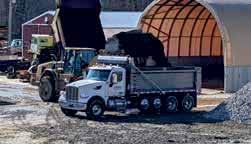



In today’s fast-paced work environment, having an acute awareness of our surroundings is a crucial skill that helps employees recognize and avoid potential hazards and dangers around them. The term ‘Situational Awareness’ refers to one’s ability to observe and understand their environment, comprehend potential hazards and predict their impact. Everyone has this ability, but it is not always used to its fullest potential.
Heightened situational awareness is very helpful to all workers, but can be especially effective for those who have a changing work environment or those who are required to perform a variety of different job tasks, each with their own unique hazards. Examples include operators of powered industrial vehicles or heavy machinery, outdoor workers where changing weather conditions occur, construction workers on job sites, service providers, educators and even healthcare workers.
To gain a better understanding of this concept, let’s take a look at the three core elements of situational awareness:
1. Observation – this is the ability to recognize what is happening in the environment around us. This may sound simple, but in today’s world with countless distractions, it can be challenging.
2. Comprehension – understanding the importance of how the actions of co-workers and the things we observe relate to our current tasks and situation. This is a form of hazard identification.
continued on page 18







continued from page 16
3. Predicting – anticipating future outcomes based on the current situation and assessing how they may impact not only ourselves, but also our work tasks and our coworkers. By identifying and recognizing hazards, we can develop the necessary steps to eliminate or minimize concerns.
Simply put, as we observe the environment in motion around us, we continuously assess for potential threats and respond quickly and appropriately to minimize danger to ourselves and others.
As we gain a better understanding of what situational awareness is and how it plays a role in the workplace, training employees is the next step. The benefits of training on situational awareness include the following:
✔ Enhanced Safety: Improved situational awareness helps employees identify hazards before they become accidents, thereby reducing the risk of workplace injuries and incidents.
✔ Better Decision Making: Employees adept at situational awareness are better equipped to assess risk, choose appropriate response actions and make informed decisions quickly, which is vital in an emergency situation.
✔ Increased Efficiency: By being keenly aware of one’s surroundings, employees can detect obstacles, avoid redundant tasks and better coordinate work efforts with colleagues.
✔ Improved Communication: Employees attuned to their environment can communicate more effectively about ongoing tasks, potential hazards and production or workflow changes, leading to better teamwork and synergy.
✔ Creating a Safety Culture: A better understanding of the workplace fosters an environment where open communication about safety is encouraged. Employees are more apt to report hazards and share concerns without fear of reprisal, reinforcing the importance of situational awareness.
Situational awareness isn’t just a skill—it’s a mindset. By staying alert and engaged, employees contribute to a safer, more efficient workplace. Organizations can build this culture through training, leadership and continuous improvement.
If you would like to know more about Sedgwick’s safety services or would like to schedule a confidential consultation, please contact Andy Sawan at andrew.sawan@sedgwick.com or 330-819-4728.





We’ll help make your properties outstanding.
Organics are included for dense lawns without excess growth.
Weeds carefully spot treated.
Direct client billing makes it simple for you.
Landscape referrals to you.
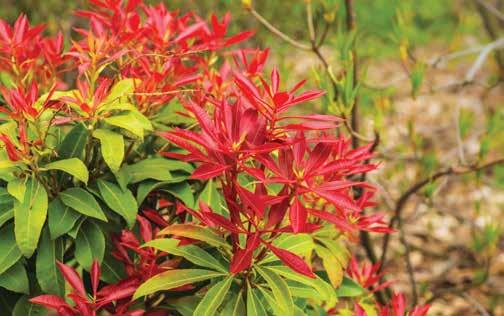

JIM FUNAI, PhD
Cuyahoga Community College
SHELLEY FUNAI, LIC
Stan Hywet Hall and Gardens
You know by now we love exploring the names behind our landscape plants so it should be no surprise that we picked this months plant because of an interesting origin story in its name. Pieris japonica is sometimes simply called Japanese pieris but may also be known as andromeda or lily-of-the-valley shrub. A broadleaf evergreen shrub most known for its flowers and bright red contrasting new leaves, this shrub used to be a prevalent part of every landscape design. While not as common these days, there are still some great cultivars in the market and we hope you find this article as inspiration to incorporate more into your future design.
David Don (1799 – 1841) was a Scottish botanist and professor of botany at King’s College in London. He served as librarian for the Linnean Society of London as well and is well known for his work sorting out the heath family of plants (Ericaceae). Don’s specialty was sorting out this family and other plants coming from plant explorations in India, Nepal, China, and Japan which were sent back to London for classification. Prior to his work, Pieris was first classified by Carl Thunberg in the late 1700’s as belonging in the genus Andromeda which still persists as a common name for the plant.
Don was a most precise botanist, and upon studying these specimens sent to him, he realized this would be a new genus in the family, separate from Andromeda. He named this new genus Pieris as a nod to the Pierides of ancient Greek mythology. The Pierides, also known as the Muses (divine singers), were worshiped on Mount Pierus in present-day
Macedonia. They were known for their beauty, grace, and refinement. Enlightenment era scientists often referred back to Greek mythology as Don did here to reference the beauty of the Muses in relation to this particular plant.
Don wrote of his inspirations in the naming, referring to the artistic beauty of the shrub in its elegant pendulous racemes of flowers in spring and deep evergreen polished leaves. He also appreciated the reference to Mount Pierus, as these plants’ natural habitat is in cool mountain forests of Japan and other parts of Asia. Another reference was to the transformational power of the Muses’ voices, paying homage to this plant’s beautiful transition of new growth from deep reds to bronze and finally to a deep glossy green. There aren’t many plants with such well-known symbolism in their names, which makes Pieris a unique plant for us.
continued on page 22


continued from page 20
While the plant was “discovered” in the late 1700s by western explorers, this flowering shrub has been in use in Japanese temple gardens for centuries prior (and to this day). For their use there they represent purity, longevity, and endurance (evergreen through winter). In our western landscapes, it became a major staple in Victorian-era gardens in the early 1800s.
While the straight species will range from six to around twelve feet tall and about three-quarters that in width in the wild, we need to pay attention to cultivars for ultimate size in the landscape. Naturally, these plants prefer shaded yet bright sites on well-drained and acidic soil. Moisture is important, but so is drainage; heavy clay is not the answer for them. In our gardens, they will bloom in early spring before the majority of other broadleaf evergreens which adds to their use in the landscape.
Some cultivars of great note are:
“Mountain Fire” perhaps the most famous of the cultivars this will reach into the six to eight foot range. The new growth is a brilliant fire-red which helped this species find its way back into modern gardens. Best used with smaller shrubs in front that can play off the blooms, new growth, and deep evergreen foliage.
“Valley Valentine” is perhaps the best non-white blooming cultivar with beautiful rose-red flowers reminiscent of red-vein enkianthus. The new growth is a bit more muted bronze-red but still beautiful contrasting against the deep glossy greens. This cultivar will be a bit more compact in the five to six foot range.
“Dorothy Wyckoff” is an older cultivar named in honor of the staff member of the Cornell Botancial Garden in the early/mid 1900s. This seven to nine foot cultivar has deep purplish-red flower buds that open to a pink-blushed white and has excellent winter cold hardiness.
“Little Heath” is a cute three foot shrub with cream-edged variegated foliage and pink-tinged new growth. While this seems harder to find, it is really a neat addition to smaller garden spaces.
“Katsura” named by French breeder Raoul Robichon in 2000, referencing the reddish early spring growth just like katsura tree (Cercidiphyllum japonicum).
“Interstella” follows Proven Winers’ drive to make every shrub dwarf, this 4’ plant has lovely flowers that are a deep red at the tip and white at the base which is pretty unique. New growth is a bit muted but the flowers make for a neat impact.
We hope you’ll consider bringing this Victorian favorite back to our gardens as its beauty has only increased with modern breeding efforts while continuing to be a pest and disease resistant ornamental (as long as you watch the proper planting site).
Jim Funai, PhD, is full-time faculty at Cuyahoga Community College, a NALP accredited associate of applied science in horticulture degree program. He has a PhD in Landscape Engineering and Forestry and is a Licensed Arborist. Shelley Funai is Grounds Manager at Stan Hywett Hall and Gardens in Akron, Ohio, which offers a historic estate designed by Warren H. Manning and a beautiful manor house museum. She is Landscape Industry Certified in Ornamental Plant Care.
“MUST
Many insurance carriers the last 5 years are preforming General Liability Insurance audits The reason for an audit is to “true up” the General Liability premium based on the actual exposure out in the field.
For Example. If you reported a field payroll for your landscaping business of $100,000 and the actual payroll was $500,000, the insurance company is owed more premium for the actual exposure out in the field. If a claim were to occur in the field, they would be receiving the true amount of premium needed for the exposure to pay the claim.
Here are 3 tips to help you protect your profits during an insurance audit with your general liability carrier:
Tip #1: “Must-Have” the requested paperwork
1. Provide all of the paperwork below to complete the audit
a. Various Payroll reports are needed for annual compensation for each employee along with an indication of the job duties of each employee.
i. Plowing should always be broken out separately from Landscaping work due to the much higher premium rate for Snow plowing.
b. A Complete list of Subcontractors used and the amount you paid to the subcontractor for the policy period and Certificates of Insurance.
c. Some insurance carriers ask for Profit and Loss statements. However, this may be negotiable with the audit or underwriter
Tip #2: “Must Have” Certificates of Insurance on file for all subcontractors for work performed on your behalf
1. If you do not have a certificate of insurance for each subcontractor, the audit dept can charge the amount you paid your subcontractor to do the work as Payroll under your company for the type of work performed.

Greg Botson Owner/Managing Director
Botson Insurance Group A Higginbotham Partner
a. So if your subcontractor plowed for you and you never received a valid certificate from his company for the policy period, the amount you paid his company would be considered payroll under your company, This could be a huge additional premium especially for snow and ice removal subcontractors due to the much higher rate versus landscape gardening or Lawn care and Mowing.
Tip #3:” Must Have” timely response to the auditor with the needed information to avoid a “Non-Compliance” Audit surcharge.
1. If a business who is being audited does not respond to the audit request, the insurance carrier could apply a non-compliance surcharge on your policy which could be 1x-3x the General Liability premium. This could be a sizable amount due.
2. I have seen many insurance carriers send collection letters out for unpaid audit balances for non compliance
These tips will help better Protect your company in the event of an audit. If you have any questions, please feel free to give me a call on my cell 440-537-2292 or email me at gbotson@ higginbotham.net.
About the writer: Greg Botson has been protecting the Green Industry for over 34 years with over 160 clients in his VIP ( Value-Added Insurance Protection) Program, which is an Ohio Landscape Association member benefit. His partnership with Higginbotham, Landscape Associations and Industry Consultants has helped the industry with Better Protection, Better Prevention (Safety tools) and Better Profits.

FIVE LESSONS LEARNED FROM
Kenny Crenshaw originally wanted to be a farmer. However, he lacked the resources to do so in the 80s.
Instead, he was presented with the opportunity to start a lawn care company with Bob Taylor. He had worked for Taylor mowing lawns while attending college. At age 22, he started Herbi-Systems, based in Memphis, Tennessee, in 1984.
Crenshaw says, at that time, all he knew was that he wanted to work outdoors and have his own company.
Taylor had 30 years of experience and helped get the company started in the right direction. When he was ready to retire, Crenshaw bought out his portion in the early 90s and took on the business as the sole owner.
Crenshaw admits that in the early years, he didn’t know what he was doing.
“There’s a big difference between having a degree in agriculture and running a lawn care business,” Crenshaw says. “Fortunately, early on, we had people who helped us with chemicals and fertilizers, our distributors, and then later on, we joined a consulting group.”
Herbi-Systems currently has a team of 70 employees. Crenshaw says six or seven team members have been with
the organization for 25 years and 25 additional employees have been with the company for over 10 years.
“We have people coming up, one of my sons is here, and then my partner, he’s got two sons here, and we’ve got other young people here that want to make this a career,” Crenshaw says.
While they aren’t looking to expand to additional branch locations, Crenshaw says their industrial weed control business is growing as fast as they can find and train people.
Crenshaw takes pride in having created a good place for people to work.
“I enjoy people being able to come to work here right out of high school, and learn the lawn care trade, and eventually start meeting their goals of having a family, a house,” Crenshaw says. “I get a lot of satisfaction out of seeing other people meet their goals.”
He says many of their team members first came to work for the company until they got a ‘real’ job.
“I got a guy here with a criminal justice degree who came to work here until they got on at the police department,” Crenshaw says. “I’ve had people come here until they got on
continued on page 27
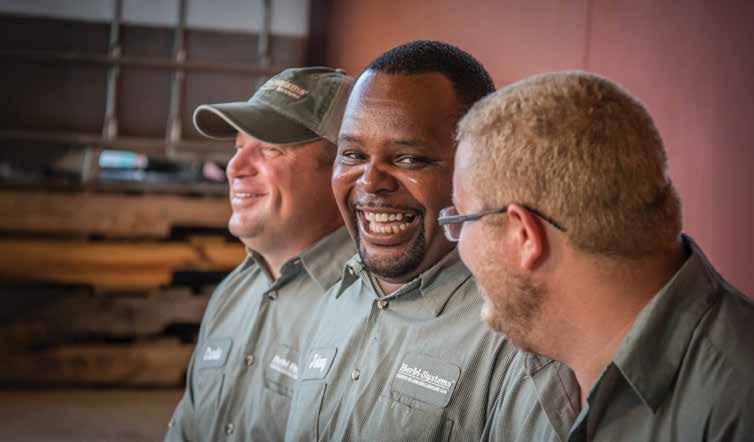
Tri-C® Plant Science and Landscape Technology (PST)

PROGRAM OPTIONS
Two-year Associate of Applied Science degree with three elective options:
• Landscape Contracting
• Tree Care
• Garden Center and Nursery Management
The Tri-C PST team placed first at the 2023 National Collegiate Landscape Competition among all participating two- and four-year schools.

Certificate of Proficiency
• Landscape Technician
Short-term Certificates
• Garden Center
• Landscape Contracting
• Landscape Design
• Landscape Horticulture
• Plant and Pest Identification
• Tree Care
PROGRAM BENEFITS
• Classes available on a full- or part-time basis
• Hybrid learning options include online lectures and hands-on labs
• Summer field experience (paid internship)
• Experienced faculty who are passionate about the green industry
• Prepares graduates for a variety of career paths

continued from page 25
at the fire department, and they stayed. A lot of people fall into the lawn care business, thinking that’s what I’ll do until I get a ‘real’ job. They find out they enjoy it.”Crenshaw says they’ve been able to grow by controlling their turnover. He says this all comes down to treating people well.
“A lot of people come here from bigger corporations who got tired of being treated like a number and told do more, more, more, and no one ever recognized what they did,” Crenshaw says.
He says the number one thing that keeps people with a company is money, but the second most important element is recognition and job satisfaction.
“After you pay a reasonable market-based compensation, then recognition, job satisfaction and those other things, they make a difference,” Crenshaw says.
Crenshaw says they will drive roughly a million miles a year with zero tickets and zero accidents caused by their drivers. This is thanks to their culture of accountability.
“I tell people we put up with sloppiness, tardiness, laziness, stinkiness, but you cannot lie or steal or have a bad driving record and work at this company,” Crenshaw says. “That’s our top three things. No lying, no stealing, and you can’t
have a bad driving record. Because people who have bad driving records are reckless. They’re reckless, they’re careless, and they’re not going to work here.”
The company also provides a safe driver bonus at the end of the year.
“If you have gone through the whole year with no tickets, no accidents, you didn’t let your spreader fall off your truck, you didn’t run over a curb and ruin a tire, you get $500 check,” Crenshaw says. “We have about 60 drivers, and so we handed out $30,000 two weeks before Christmas.”
He says they will have everyone stand in a circle and call out the drivers’ names as they present the checks. Crenshaw says employees also don’t want to be the only one who didn’t get a safe driver check.
Crenshaw says they also make a point to drug test because driving under the influence never ends well.
Crenshaw enjoys working in the shop on equipment and has even developed several inventions to help in the field.
“The days of figuring out how to treat lawns are long past,” Crenshaw says. “Now we’re trying to figure out how to treat two
continued on page 28

continued from page 27
more lawns a day and still do a good job. We’re trying to figure out how to hire people that our competitors couldn’t hire.”
One of his inventions is an herbicide applicator that has two triggers and two applicators. He is currently working on a newer model sprayer that will go into his markets.
Crenshaw says they are also always adapting their marketing strategy.
In the 1980s and 1990s, he says you didn’t have to do much to get business beyond answering the phone.
As the market became more competitive, he started running ads on the radio and in the Yellow Pages. They also hired Don Nichols with Yes Marketing to help them with their direct mail and telemarketing efforts. Crenshaw has even done TV ads and billboards.
“We realized that we had to market,” Crenshaw says. “If we didn’t market, we weren’t going to grow; we were going to shrink.”
Crenshaw says they will move their marketing dollars around as certain methods’ effectiveness waxes and wanes.
“We know a lot of our marketing budget is wasted every year, so we keep moving, shifting, and evaluating,” Crenshaw says.
He says they regularly review their lead sources, what it costs per lead and per sale as well as their close rate.
“There’s really no silver bullet to marketing,” Crenshaw says. “Some of it is brand awareness, some of it is lead generation, you’ve really got to do it all.”
As the largest locally owned lawn care company in the Memphis market, Crenshaw says they have an advantage against some of the other companies going the private equity route.
“If people can easily make a choice between a competent, reliable local company and a national company, they will choose that company over a national brand,” Crenshaw says.
Crenshaw recommends that other independent companies looking to remain competitive against private equity-backed businesses get involved in peer groups and work with consultants.
“They can give you the expertise that the M&A guys bring,” Crenshaw says.
He encourages networking with other successful people if you want to continue to thrive.
“You can’t read enough leadership books,” Crenshaw says. “You can’t read enough Wall Street Journal articles. You can’t read enough trade magazine articles. You just can’t do enough of that stuff to meet the needs of a very complicated business in a very complicated society. You’ve got to get that from peers and from experts.”
Crenshaw says that lawn care is a commodity because at the end of the day, companies are using the same products and same equipment to get the job done.
The key is whether you are a McDonald’s or Chick-fil-A, whereas the first may have a few cars in the drive-thru, Chick-fil-A has cars backed around the corner.
“McDonald’s has been in the business a long, long time,” Crenshaw says. “They created the fast food business, but they’ve gotten sloppy. They’ve gotten lazy. Their training is not as good as it used to be.”
Crenshaw argues that customers will drive an extra mile or two to stop at Chick-fil-A over a McDonald’s because they like the experience there. Similarly, Herbi-Systems works to provide their customers with a good experience. Crenshaw says they make it easy for customers to contact them and actually reach a human being.
“We use technology where it’s appropriate to make the customer experience better, but we reject it when it makes the customer experience worse, even if it saves us money,” Crenshaw says.
One example of this is how they strive to keep the same technicians on the same route.
“We never purposely put someone on another route simply because it’s a bit more efficient,” Crenshaw says. “Most of our techs know our customers. The customers know the tech. You’d be surprised how many customers will call in here, and they know their tech’s name. Is it more efficient to have a

computer route people and shift them all over the market? Probably so. But you’re going to lose efficiency when you’ve got a guy that pulls up in a yard that he’s never seen before, and he’s got to spend two or three minutes evaluating what that yard needs, versus the other guy, he already knows what the yard needs, and when he pulls up, he just confirmed what he already knew.”
Crenshaw says their growth is mainly limited by their ability to find labor and get the work done.
“You spend a fortune on marketing and bring the customers in, but if you can’t get to get them serviced and keep them happy, you can’t afford to churn these customers,” Crenshaw says.
Crenshaw says he doesn’t have any long-term goals for the business; he simply wants to go to work and do better than he did yesterday.
“I think at the end of the day, you just really have to be satisfied that you’ve done the best you could do with what you had,” Crenshaw says.
Want to learn more? Join NALP for exclusive training, mentoring, and resources to grow your landscaping business.

PATTY LAMPERT Executive Director / OLA
The OLA has been shaped by people like you, members who give their time, share their expertise, and step up to strengthen the Ohio Green Industry. Whether you’ve served on a committee, volunteered at an event, mentored the next generation or supported a fellow professional, your contributions have built the foundation of this association.
During this month of giving, we offer a heartfelt THANK YOU for everything that you have contributed to make OLA what it is today!
THANK YOU for your willingness to share everything from trade knowledge to industry experiences and elevating the industry!
THANK YOU for giving OLA so much time to help train and mentor the next generation!
THANK YOU for collaborating with industry professionals to create solutions to the problems together!
THANK YOU for believing in when we all do better, we elevate the industry and everyone does better!
THANK YOU for renewing your memberships and becoming Milestone Members!
THANK YOU for choosing OLA to help you enhance your professional development, and to participate in new experiences.
OLA is here for to support you today and will be into the future. OLA is where members network, socialize, collaborate and celebrate achievements. We are focused on your needs, opportunities, and challenges, and it’s where you can shape your career. We are here to help you create a stronger voice together and to help build a passionate community for the Green Industry.
We welcome your feedback and participation as we continue to educate, elevate, and advocate for our members. Please call the office at 440-717-0002 or email me, Patty@ohiolandscapers.org to discuss what’s on your mind.
We wish everyone a Happy Thanksgiving, and safe travels if you’re traveling!







